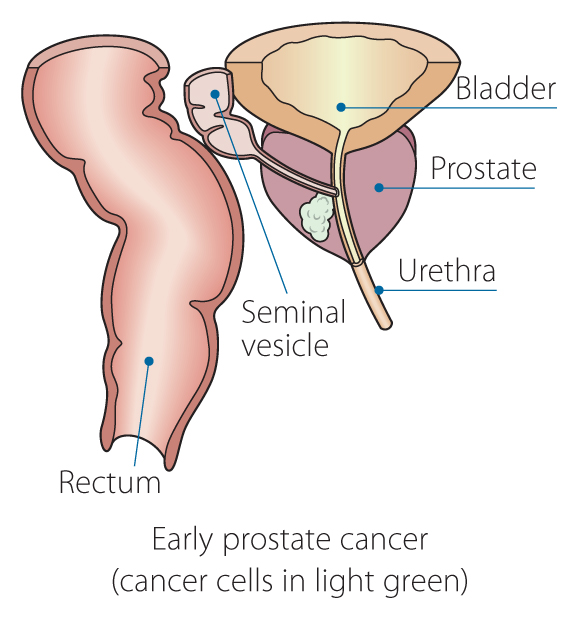Prostate Cancer Treatment in Costa Rica
Find the best clinics for Prostate Cancer Treatment in Costa Rica
No clinics available
United Arab Emirates offers the best prices Worldwide
Price: $ 95

WHY US?
At Medijump, we're making medical easy. You can search, compare, discuss, and book your medical all in one place. We open the door to the best medical providers worldwide, saving you time and energy along the way, and it's all for FREE, no hidden fees, and no price markups guaranteed. So what are you waiting for?

Free

Best Price

Widest Selection

Risk-Free
What you need to know about Prostate Cancer Treatment in Costa Rica

The core approach for Prostate Cancer Treatment incorporates a meticulous diagnostic process. This entails detailed examination to ascertain the disease's stage, tumor's size and location, patient's overall health status, and potential hazard of different treatment alternatives. Following this, a tailored treatment strategy is crafted, considering the patient's wishes and anticipated possible reactions and results. This individualized angle to treatment significantly impacts making therapies more effective and improving patient comfort and welfare throughout their pathway to healing.
There is no single prostate cancer treatment that can be used for everyone. The main treatment for prostate cancer includes surgery, radiation, chemotherapy, and immunotherapy.
What is the cost of Prostate Cancer Treatment in Costa Rica?
Costs associated with Prostate Cancer Treatment in Costa Rica can have a broad range owing to several influencing elements. These include the extent of the cancer, selected treatment method, and the individual's health status. A general estimate suggests that prices may start from several thousand dollars for initial stage cancers treated with radiation therapy and escalate to large sums for advanced stage cancers that need more intricate treatments. However, a multitude of facilities in Costa Rica offer adaptable payment options, collaborating with various insurance companies to ensure expenses don't obstruct necessary treatment.
Remember, prioritizing your well-being is always a judicious choice. Prompt treatment for prostate cancer could greatly enhance the patient's life quality and increase the chances of survival. It is recommended to have open conversations about financial aspects with your health care provider or financial consultant.
What does a Prostate Cancer Treatment Procedure Involve?
If you are generally healthy and cancer has not spread, surgery is the best option. Surgery is performed during general anesthetic and may involve removing your prostate gland and the tissue around it. Following on with radiation therapy, high-energy beams (similar to X-rays) are used to kill the cancer cells, or with chemotherapy, drugs taken by the mouth or through an IV are used to kill cancer cells and shrink the tumors. For advanced prostate cancer, immunotherapy is used to use your immune system to fight cancer.
How Long Should I Stay in Costa Rica for a Prostate Cancer Treatment Procedure?
The length of time spent in Costa Rica greatly varies depending on your selected Prostate Cancer Treatment. Certain treatments may involve brief hospital admissions, others could mandate extended periods of hospital care. After surgery, you may need to stay for around 7 to 14 days. For chemotherapy, radiation therapy, and immunotherapy, your length of stay depends on how many cycles are needed for your specific case.
Moreover, one must factor in the time needed for initial discussions prior to the procedure and subsequent check-ups post-therapy. For instance, operations like a radical prostatectomy might necessitate an extended hospital stay compared to treatments like proton beam therapy. Furthermore, it might be prudent to extend your stay beyond the necessary time for a seamless recuperation.
What's the Recovery Time for Prostate Cancer Treatment Procedures in Costa Rica?
The recovery time following a Prostate Cancer Treatment process can differ greatly from one person to the next. Variations in factors like the form and progression of prostate cancer, the particular treatment approach applied, and the person's entire health status can substantially affect recuperation durations. For example, recuperation durations typically extend further following operations such as a radical prostatectomy compared to therapies like radiotherapy.
Generally, after prostate cancer surgery, most men will get back to normal within six to eight weeks, but you may be able to go back to work within 3-4 weeks. After any type of therapy, you should be able to return to work the next day or if there are no symptoms that interfere with your ability to work. Make sure to ask your doctor how long until you can resume your normal activities, including exercises and heavy lifting.
What sort of Aftercare is Required for Prostate Cancer Treatment Procedures in Costa Rica?
The strategy for post-treatment follow-up subsequent to a Prostate Cancer Treatment procedure in Costa Rica entails a multi-faceted approach, targeted at facilitating a superior recuperation journey. Your doctor will likely give you instructions, which may include eating a healthy, balanced diet and performing light exercises. You may also need to attend follow-up appointments with your local doctor to monitor your condition. During this appointment, make sure you tell your doctor about any symptoms you experience.
What's the Success Rate of Prostate Cancer Treatment Procedures in Costa Rica?
Survival rates are particularly high for patients diagnosed in the early stages of prostate cancer. The 5-year survival rate is nearly 100%, but if the prostate cancer has spread to other parts of the body, the survival rate is significantly reduced to 30%. Notwithstanding, it is crucial to bear in mind that such statistics represent mean values, and individual results can deviate significantly owing to numerous variables. These include the patient's general well-being, the cancer's progress, and the distinct therapy employed.
Are there Alternatives to Prostate Cancer Treatment Procedures in Costa Rica?
If you prefer not to undergo any of the treatments mentioned above because of the side effects or your personal reasons, you can discuss with your doctor what your alternatives are. For early prostate cancer, you may undergo cryotherapy or cryosurgery. If your condition does not cause any symptoms, your doctor may suggest active surveillance.
What Should You Expect Before and After the Procedure
Prior to the Prostate Cancer Treatment, patients are expected to have discussions with their medical practitioners to uncover the operations' specifics, comprehend the possible hazards and advantages, and offer informed consent. Patients might also need to go through several evaluations and examinations such as bone, CT, and MRI scans to better diagnose the ailment. Changes in day-to-day activities like a healthy nutritional plan, constant physical activity, and adequate rest could also be suggested to ready the body for the procedure.
Post Prostate Cancer Treatment, patients may confront varying after-effects based on the tailored treatment approach. These could encompass pain, exhaustion, urinary, and sexual complications. However, these after-effects are short-lived and can be regulated with the right care and prescription drugs. Regular appointments will be arranged to document recovery development and vigilance for potential relapse. Tweaks in lifestyle including balanced nourishment, consistent workouts, and stress control can aid in boosting the healing process and overall wellbeing.
In terms of symptoms, prostate cancer can be life-threatening, spread to other organs, and cause painful symptoms. After treatment, any symptoms should be relieved and the risk of your cancer spreading to other parts of your body will be greatly reduced. Although there is no sign of cancer in your body anymore, your doctor will not say ‘cured,’ instead, they may say you are in remission.
What are the Potential Risks of Prostate Cancer Treatment?
Like any other therapy, Prostate Cancer Treatment methods too encompass certain hazards. The extent of these risks can fluctuate:
- Infection and bleeding
- Fatigue and feeling sick
- Hair loss
- Diarrhea
- Lower sex drive
- Erectile dysfunction
- Bowel problems
- Inability to get a woman pregnant.
It's essential not to overlook the fact that these potential hazards need to be balanced against the danger of unattended prostate cancer. If left unchecked, it might develop into severe health issues and significantly decrease the quality of life.
Whilst the information presented here has been accurately sourced and verified by a medical professional for its accuracy, it is still advised to consult with your doctor before pursuing a medical treatment at one of the listed medical providers
No Time?
Tell us what you're looking for and we'll reachout to the top clinics all at once
Enquire Now

Popular Procedures in Costa Rica
Prices Start From $2,487

Prices Start From $39

Prices Start From $1,000

Prices Start From $889

Recommended Medical Centers in Costa Rica for procedures similar to Prostate Cancer Treatment

- Interpreter services
- Translation service
- Religious facilities
- Medical records transfer
- Medical travel insurance
- Health insurance coordination
- TV in the room
- Safe in the room
- Phone in the room
- Private rooms for patients available

- Interpreter services
- Translation service
- Religious facilities
- Medical records transfer
- Medical travel insurance
- Health insurance coordination
- TV in the room
- Safe in the room
- Phone in the room
- Private rooms for patients available

- Interpreter services
- Translation service
- Religious facilities
- Medical records transfer
- Medical travel insurance
- Health insurance coordination
- TV in the room
- Safe in the room
- Phone in the room
- Private rooms for patients available

- Interpreter services
- Translation service
- Religious facilities
- Medical records transfer
- Medical travel insurance
- Health insurance coordination
- TV in the room
- Safe in the room
- Phone in the room
- Private rooms for patients available

- Interpreter services
- Translation service
- Religious facilities
- Medical records transfer
- Medical travel insurance
- Health insurance coordination
- TV in the room
- Safe in the room
- Phone in the room
- Private rooms for patients available

- Interpreter services
- Translation service
- Religious facilities
- Medical records transfer
- Medical travel insurance
- Health insurance coordination
- TV in the room
- Safe in the room
- Phone in the room
- Private rooms for patients available

- Interpreter services
- Translation service
- Religious facilities
- Medical records transfer
- Medical travel insurance
- Health insurance coordination
- TV in the room
- Safe in the room
- Phone in the room
- Private rooms for patients available

- Interpreter services
- Translation service
- Religious facilities
- Medical records transfer
- Medical travel insurance
- Health insurance coordination
- TV in the room
- Safe in the room
- Phone in the room
- Private rooms for patients available

- Interpreter services
- Translation service
- Religious facilities
- Medical records transfer
- Medical travel insurance
- Health insurance coordination
- TV in the room
- Safe in the room
- Phone in the room
- Private rooms for patients available

- Interpreter services
- Translation service
- Religious facilities
- Medical records transfer
- Medical travel insurance
- Health insurance coordination
- TV in the room
- Safe in the room
- Phone in the room
- Private rooms for patients available
